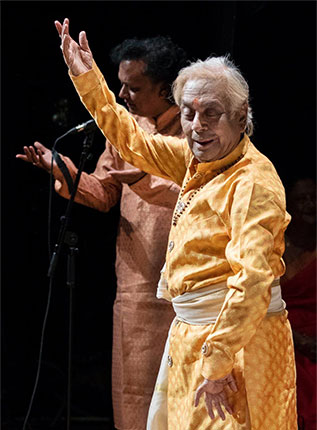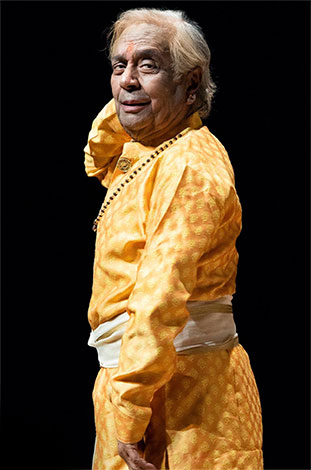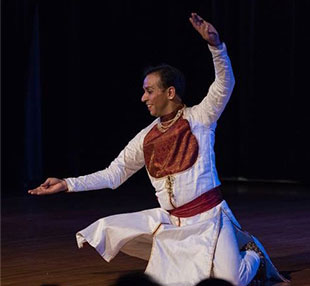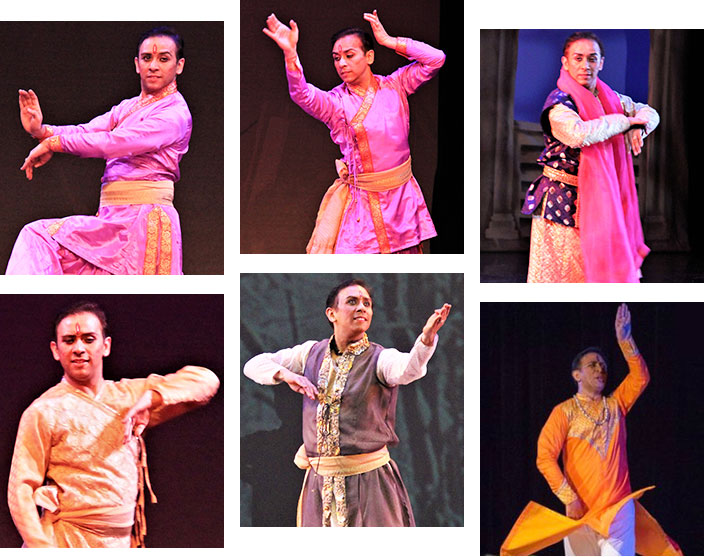What is Kathak Dance?
“School of Kathak Dance & Performing Arts”
What is Kathak Dance?
Kathak is one of the eight forms of Indian classical dance. The origin of Kathak is traditionally attributed to the traveling poets of ancient northern India known as Kathakas or storytellers. The term Kathak is derived from the Vedic Sanskrit word ‘Katha’, which means story, and Kathaka which means ‘he who tells a story’. Wandering Kathakas communicated stories from the great epics and ancient mythology through dance, songs and music in a manner similar to early Greek theatre. Kathak evolved during the ‘Bhakti’ or devotional movement, particularly by incorporating the childhood and stories of the Hindu Lord Krishna, as well as independently in the courts of north Indian kingdoms.
It can be said that there is probably no classical dance style that is as free in its presentation as Kathak. Every Kathak dancer starts their performance in their own way and arranges the dance pieces as per their choice. Kathak can be divided into Nritta or pure technique and Nritya or Abhinaya (Expressional dance), which are played on the Tabla (percussion instrument, consisting of a pair of drums) executed by the bear feet. Every Indian Classical dancer wears ghungroos or bells but the real use of these ghungroos as we see in Kathak style is unparalleled. Each syllable produced on Tabla or Pakhavaj is resounded by a Kathak dancer. It gradually gains in speed and tempo and reaches a climatic degree. The artists give a brilliant demonstration of both rhythm and movement. The tremendous footwork is indeed another noteworthy feature of Kathak.
A Kathak dance performance begins with the Nritta portion in which Thaat, Amad, Toda, Tukda, Paran, Chakkardar and Tatkaar, etc are presented generally. A salient feature is the use of numberless circles. The last Tihai of every Bol usually culminates in quick pirouettes called Chakkars. In the Abhinaya or expressional portion Gat Nikas, Gat Bhav, Thumri or some Bhajan is presented. In Gat Nikas, some specific posture is presented with gaits. Gat Bhav has a mime character in it. In Thumri Bhav, the dancer presents different moods and emotions as per the song of his choice.
During the time of Mughal rule in India, Kathak went through certain changes and flourished as a royal pastime. There were changes in the style of dressing as well as the introduction of new items like the Thumri and Ghazal. Thus from a temple art Kathak become a court art. The journey of Kathak Dance from the Hindu temples to the courts of the Mughals is quite fascinating and the various elements absorbed over the different periods in history and the different Gharanas or tradition, that is, Lucknow Gharana, Jaipur Gharana, and Banaras Gharana, have given Kathak an exquisite character which is seen in the repertoire of a Kathak Recital.






